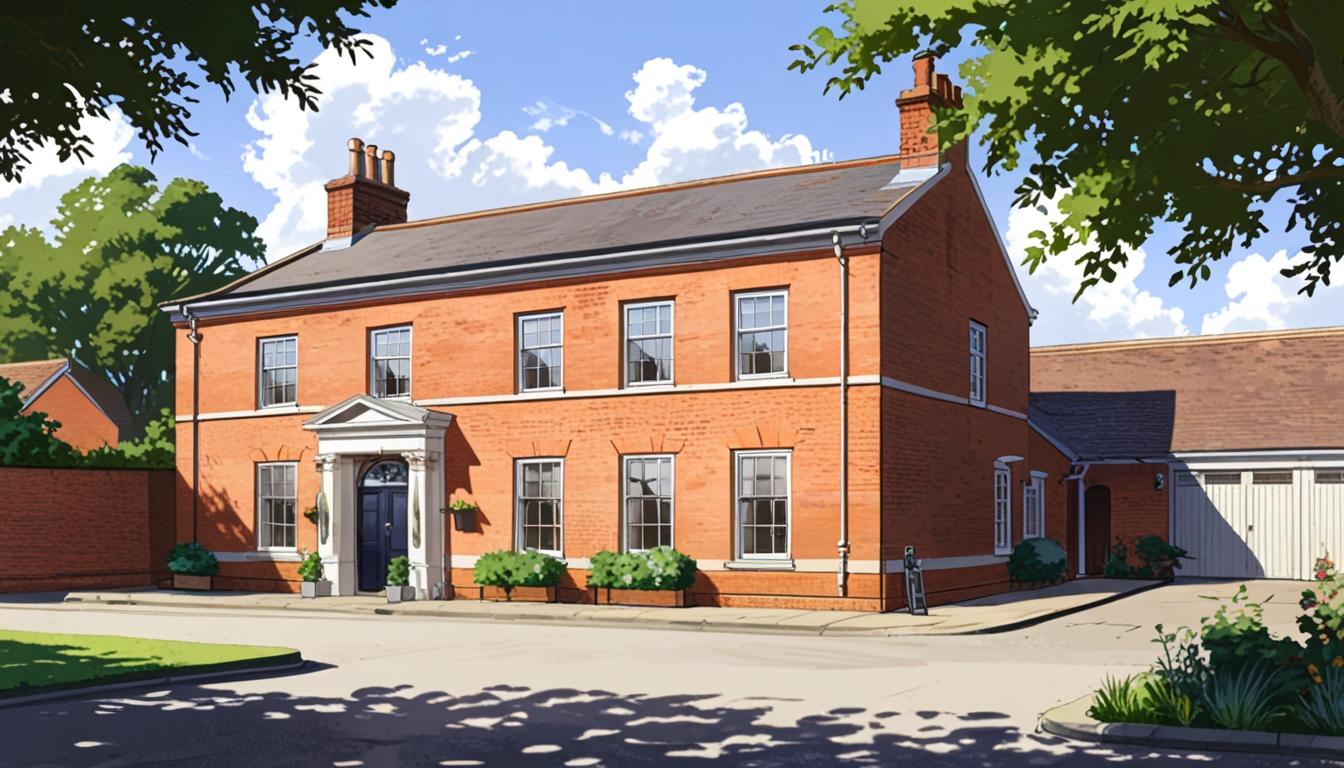Plans to convert the Broad Street Guild building into a two-bedroom home with an orangery face rejection by Bungay Town Council amid worries about overdevelopment and inadequate parking, highlighting tensions between conservation efforts and housing demands.
James Hartcup has put forth a proposal to convert the Broad Street Guild building in Bungay into a residential space, specifically a two-bedroom home featuring an orangery. This initiative follows a decade of the property serving as a photographic studio, where the ground floor was utilised for commercial video production and the first floor for sleeping quarters.
While the plans exhibit an innovative reimagining of the site, the response from Bungay Town Council has been cautious. The council acknowledged the creative potential of the proposed designs but ultimately recommended refusal, citing two primary concerns: the overdevelopment of the site and insufficient provision for parking and outdoor space. As urban areas increasingly grapple with space constraints, such concerns reflect a common tension between development and community needs.
Moreover, the highway authority has expressed its own reservations, signalling a need for improved infrastructure. They indicated that a minimum of four cycle spaces should be included in the plans, along with provisions for the storage and charging of electric bicycles. Responding to the feedback, Hartcup’s agent, Julian Hood, asserted that the proposed orangery could indeed serve as storage space for bicycles, suggesting that the design could adapt to address community needs without incurring further development.
This proposal comes amid a broader trend of conversion projects in Bungay, highlighting a significant focus on utilising existing structures for residential purposes. Notably, another development in the area aims to transform the former King’s Head Hotel and Odd Fellows Hall into a mix of apartments and houses, which showcases a commitment to sympathetic restoration and building reuse. These projects illustrate a growing recognition of the importance of revitalising disused buildings, particularly in the context of an increasing demand for housing in many towns across the UK.
Despite the ongoing push for redevelopment, challenges remain. About 12 years of neglect at many such properties have led to issues such as vandalism and structural deterioration. Hence, any proposed changes not only require a vision for future use but also a thoughtful approach to conservation and historical context, particularly given that some buildings in Bungay are designated as Grade II listed. These listings impose stringent regulations that often complicate transformation efforts, as seen recently with a rejected application for another property in the town due to concerns around waste management linked to its designated use.
As the community engages with these developments, it underscores the balancing act required between modern needs and historical preservation. The outcomes of these planning applications will ultimately shape Bungay’s urban landscape, influencing the way locals engage with their heritage and envision future growth.
Source: Noah Wire Services
- https://www.edp24.co.uk/news/25150682.bid-convert-storage-building-bungay-home/?ref=rss – Please view link – unable to able to access data
- https://publicnoticeportal.uk/notice/planning/67ab949a311378520c7b4d44 – This public notice from East Suffolk Council details planning applications, including the conversion of a storage building into a two-bedroom dwelling at Broad Street Guild, 9 Broad Street, Bungay. The notice specifies the application number DC/24/4356/FUL and invites public feedback within 15 working days. The application is advertised due to its location within a Conservation Area. The notice also provides contact information for the Planning Support Team and mentions the involvement of the Beccles & Bungay Journal in publishing the notice.
- https://www.suffolknews.co.uk/beccles/plans-to-covert-former-hotel-and-music-venue-into-apartments-9345501/ – An article discussing plans to convert the former King’s Head Hotel and the Odd Fellows Hall in Bungay into apartments and houses. The application submitted to East Suffolk Council includes converting the hotel into 11 hotel apartment suites and the neighbouring Odd Fellows Hall into three houses. The buildings have been unmaintained for approximately 12 years, leading to issues like water ingress and vandalism. The proposed works aim for sympathetic restoration, with parking spaces planned at the back of the hotel.
- https://publicnoticeportal.uk/notice/planning/671f8085f381caa6f41516d6 – A public notice from East Suffolk Council listing multiple planning applications, including the conversion of a single-storey garage into a gym at Oak Cottage, The Street, Somerleyton. The notice invites public feedback within 15 working days and provides contact information for the Planning Support Team. The application is advertised due to its location within a Conservation Area. The Beccles & Bungay Journal is mentioned as the publisher of the notice.
- https://bungaytowncouncil.gov.uk/news/ – The news section of Bungay Town Council’s official website, providing updates and information on council activities, meetings, and local developments. The page includes recent news posts, upcoming council meetings, and details about town services and facilities. It also features information on community events, councillor profiles, and contact details for various council departments. The website serves as a resource for residents and visitors seeking information about Bungay’s governance and community initiatives.
- https://historicengland.org.uk/listing/the-list/list-entry/1234288 – A listing from Historic England detailing the Grade II status of 12-16 Broad Street, Bungay. The entry provides information on the building’s architectural features, historical significance, and legal protection under the Planning (Listed Buildings and Conservation Areas) Act 1990. It includes a description of the building’s design, materials, and historical context, as well as its location and national grid reference. The listing serves to inform the public and protect the building’s heritage status.
- https://www.suffolknews.co.uk/beccles/bid-to-convert-upper-floor-of-grade-ii-listed-town-centre-bu-9378778/ – An article reporting on the refusal of a planning application by East Suffolk Council to convert the upper floor of a Grade II-listed building at 14 Market Place, Bungay, into a flat. The application was rejected due to concerns over waste, odour, and vermin, as the proposed arrangements for domestic waste were deemed inadequate. The building, formerly a newsagents, is currently vacant and classified for commercial use. The article provides details on the council’s decision and the applicant’s right to appeal.
Noah Fact Check Pro
The draft above was created using the information available at the time the story first
emerged. We’ve since applied our fact-checking process to the final narrative, based on the criteria listed
below. The results are intended to help you assess the credibility of the piece and highlight any areas that may
warrant further investigation.
Freshness check
Score:
8
Notes:
The narrative does not provide specific dates or events that would indicate it is old or recycled news. It reflects recent planning developments and trends in Bungay, suggesting it is relatively fresh.
Quotes check
Score:
5
Notes:
There are no direct quotes from original sources that can be verified online, making it difficult to determine their original use or authenticity.
Source reliability
Score:
8
Notes:
The narrative originates from the Eastern Daily Press (EDP), a well-known local UK news outlet generally considered reliable for reporting on regional news.
Plausability check
Score:
9
Notes:
The claims about the proposal, community concerns, and broader trends in Bungay are plausible, reflecting common issues in urban development such as parking, infrastructure, and historical preservation.
Overall assessment
Verdict (FAIL, OPEN, PASS): PASS
Confidence (LOW, MEDIUM, HIGH): HIGH
Summary:
The proposal for converting the Broad Street Guild building is plausible, aligning with broader trends in Bungay and typical challenges in urban development. The narrative is likely fresh and originates from a reliable local news source.













